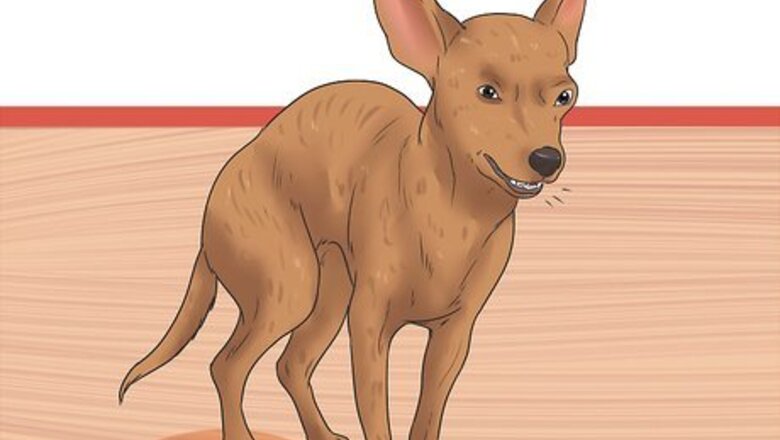
views
X
Research source
If you think your dog has a problem, it is helpful to know what to be alert for and how your vet will make the diagnosis.
Identifying the Symptoms of a Collapsed Trachea

Look for a honking, dry cough. The main sign of a collapsing trachea is a honking, dry type of cough. The cough may sound like a goose honking. A coughing episode is most likely to be triggered by pulling on a collar or when the dog pants heavily. The cough may happen when you pick up your dog or after they drink water.

Watch for labored breathing. In addition to a cough, your dog may have difficulty breathing. This can be when he’s breathing normally, or when he is overly excited. This can lead to respiratory distress. Your dog may also make a wheezing noise when he breathes. Labored breathing can be triggered by irritants, like smoke and dust, obesity, or hot weather.
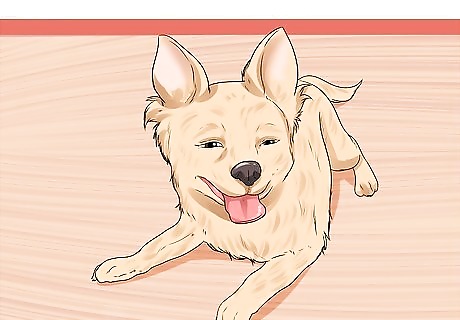
Monitor your dog during exercise. Another sign of a collapsed trachea is intolerance during exercise. This might present itself as labored breathing or an inability to perform normal exercise.

Watch for gagging. If your dog is gagging while eating and drinking, it could be a sign of a collapsed trachea. This can happen because of the restriction in the tubes. While the dog is eating and drinking, look for signs of coughing, too.
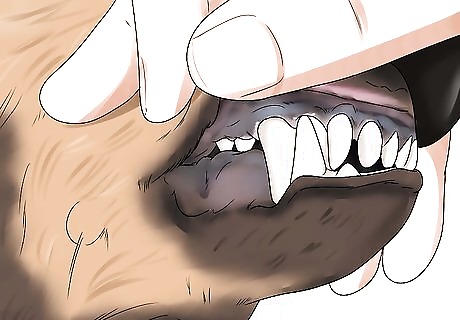
Check for blue gums. In extreme cases, if not enough air is getting into the dog's lungs, then the membranes lining his mouth and his tongue may take on a blue tinge. The dog can also turn blue when he is excited. In extreme cases, the dog could faint or lose consciousness.
Diagnosing A Collapsed Trachea
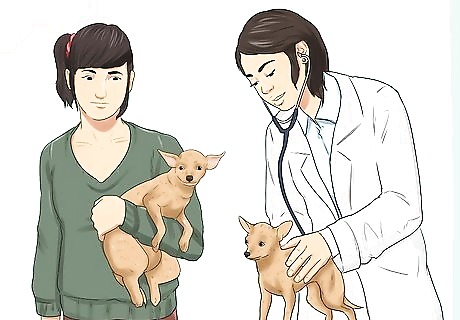
Take your dog to the vet. As soon as your dog starts presenting symptoms, take him to the vet. The vet will examine your dog and look for indications of a respiratory infection, such as a raised temperature, swollen lymph nodes, or unusual noises in the lung. Your vet will probably want to perform bloodwork and other routine tests. Other conditions may present like a collapsed trachea. Coughing is a general sign, so not every Chihuahua that coughs is going to have a collapsed trachea. Other coughs that can mimic this problem include having a long soft palate, kennel cough, heart disease, or lungworm. However, any cough should be checked out by your vet.
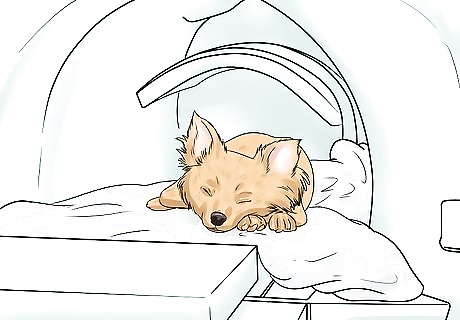
X-ray the dog’s lungs. The next step is for the vet to x-ray the dog's lungs and throat. This will rule out a lung infection as the cause for the cough. Because of the way the collapse shows up on x-rays, the collapsed trachea may not always be visible on the x-rays.
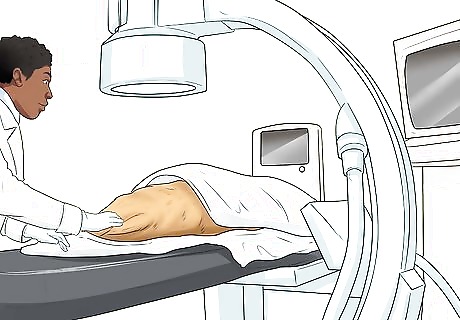
Get your dog a fluoroscopy. A fluoroscopy is a type of real-time x-ray, where it's possible to watch the actual movements of the trachea. However, this type of equipment is not available at every practice and referral to a specialist center may be necessary.
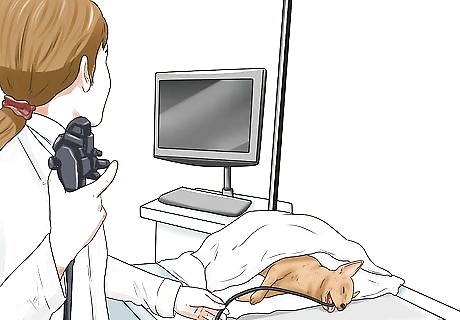
Ask for an endoscopy. Your vet can determine if your chihuahua has a collapsed trachea with an endoscopy of the trachea. This involves a small fiber-optic camera being passed down the windpipe while your dog is anesthetized. The operator watches the images to see if the windpipe narrows during certain phases of breathing. However, endoscopy can cause problems in small dogs because the camera can take up most of the diameter of the windpipe and stop the dog from breathing. Thus, the operator can only study the windpipe for brief periods of time before the camera has to be withdrawn and more anesthetic gas given.
Understanding Collapsing Tracheas

Learn what causes a collapsing trachea. The trachea, also known as the windpipe, is the tube that takes the air from mouth or nose to the lungs. When a trachea collapses, instead of the rings maintaining a totally open pipe or tube, they collapse or squash down. When this happens, water cannot pass along and it makes it difficult for air to flow along. The trachea can collapse because the cartilage rings are badly formed and are too wide and narrow, because the ligament filling the gap is too long and floppy, or due to a combination of both of these factors. The lining of the windpipe is very sensitive, and in a Chihuahua, this flattening can make the dog cough. Small breeds, such as the Chihuahua, are most at risk, probably because of a genetic tendency for the rings to be malformed. Other breeds commonly affected include Yorkshire terriers, Pomeranians, Shih Tzus, Maltese terriers, toy poodles, and pugs.
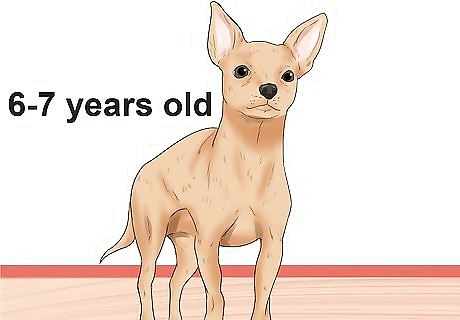
Monitor older chihuahuas. Collapsed tracheas can happen at any age. However, the condition generally appears around six to seven years of age. Keep an eye on your chihuahua as he ages.
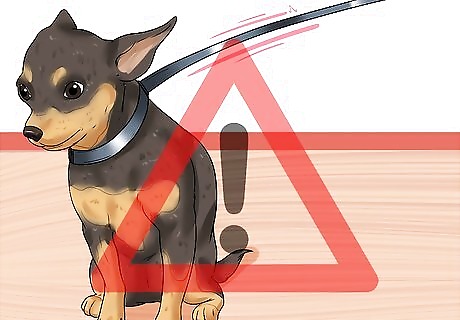
Refrain from pulling on collars. One reason dogs might end up with a collapsed trachea is from the owner pulling on the collar. Jerking the collar or using a choke chain can put enough pressure on the windpipe with force that can cause it to collapse. Use a dog harness instead of a collar when using a leash on your dog.



















Comments
0 comment